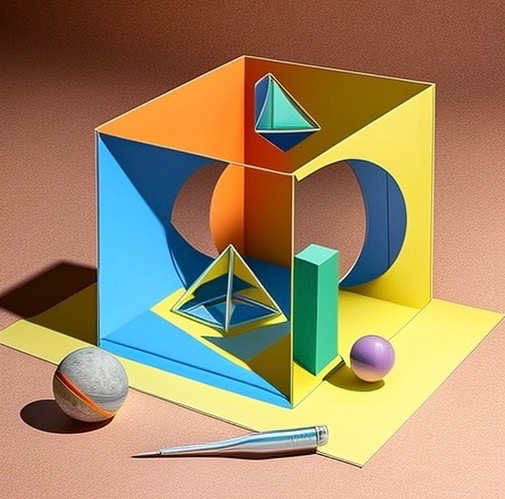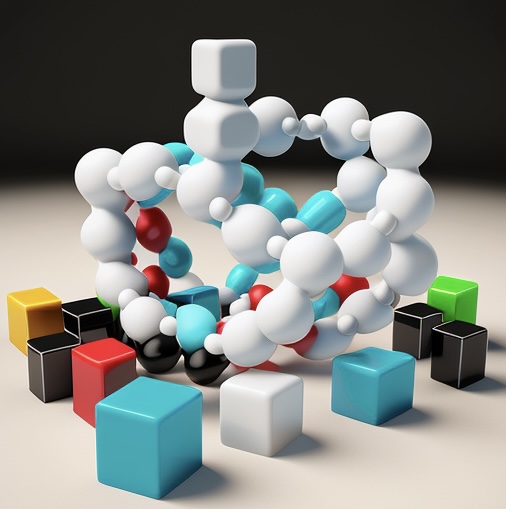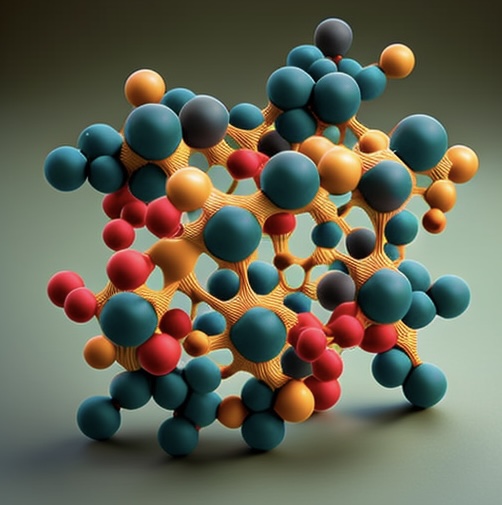The traditional teaching- and learning process in highertraditional university education employuses strategies that positionhave placed the students as recipients as a receiver of information , which is transmitted by the teacher, which is and conceptualized as knowledge. However, the reality in which we live, including new generational groups’ characteristics, requires implementing training solutions that meet allow to meet the needs of individuals' needs in into the development of skills or know-how. Thus, deploying suitable solutions to society through a framework that forms individuals, capable of continuously seeking knowledge, creating and innovating, is crucial. The "Reproduction of an Environment of Innovation in the Classroom" (RAIS) is a product-based learning and evaluation strategy where the student is actively involved in constructing and generating knowledge. It allows developing the programmatic competencies in the engineering courses to attain a feasible product. The RAIS strategy has been applied in the Physical chemistry for Chemical Engineers and Industrial Chemistry courses. Students successfully formulated a product using the know-how attained in each course. In addition, this strategy increased motivation compared to other traditional courses, developing the ability to deploy and find solutions in work environments with multidisciplinary groups.
- Product-based learning
- chemical engineering
- creativity
- innovation
1. Introduction
Nowadays, education demands significant and complex changes in its current context. Conceiving education as a whole requires an structure around four fundamental learnings: Learning to know, Learning to do, Learning to live together, and Learning to be [1]. Traditional teaching strategies focus on learning to know, and in a few cases, on learning to do, leaving aside the other two forms of learning, i.e., living together and being. Therefore, it becomes urgent to transcend the purely instrumental vision of education and consider its function in all its fullness, namely, the person's self-realization [2].
In this sense, the contributions of humanistic and transpersonal psychology ton the human being’s self-realization process are valuable [3]. On the one hand, identifying the individual character treats for self-realization. On the other hand, developing and strengthening the processes and attitudes which are necessary to create favorable conditions for personal growth. Discovering, awakening, increasing creative possibilities, and taking initiatives are fundamental conditions for self-being and social development, representing the broader objectives of education [1].
Creativity and the ability to undertake tasks and challenges are conditions that the human beings can develop. The latter is attained through processes that strengthen attitudes such as resilience, self-control and social intelligence [4][5][6]. Thus, carrying out activities that promote growth of the innovative capacity, such as the observation from various points of view, collaborative work, and the generation and connection of ideas, is of utmost importance [7][8]. Furthermore, the development of attitudes and abilities contributes to the student’s self-development by creating positive emotions, committing to good interpersonal relationships and developing an evolving meaning of purpose in life. Thus, leading individuals to achieve the proposed objectives, among them, personal well-being [2][9][10] (Figure 1).

Figure 1. Representation of a multidimensional environment for the generation of knowledge.
 Figure 1. Representation of a multidimensional environment for generation of knowledge.
Figure 1. Representation of a multidimensional environment for generation of knowledge.
The "Reproduction of an Environment of Innovation in the Classroom" is a product-based learning strategy where the students are co-participants in the creatingon of knowledge [11]. Thus, the development of creativity, innovation and collaborative work capacities are crucial. RAIS is a proposal that was presented in a scenario of a high student dropout rate coupled with athe progressive decrease in performance throughout the curriculum [12]. The authors consider that in addition to the deficiencies in the basic pre-university preparation of students, the lack of motivation and self-confidence are partly responsible for this situation.
The RAIS strategy has as its main objective to involve students in developing a product that responds to a real need of the society to which they belongs. Therefore, students are motivated and oriented to mcomprehensively manage the course's knowledge comprehensivelye of the course in question, necessary for the project's successful deployment. RAIS is in the intersection between learning by construction and discovery, cooperative and collaborative learning, product learning and the reproduction of a business environment in the classroom [13][14][15][16][17].
A course designed according to RAIS seeks to implement the characteristics of a start-up company. These are small organizations, with a minimum internal hierarchy, born from enterprising individuals in a particular area that identify an idea (product or service), and organize themselves to execute it, thus promoting practices associated with innovation and creativity. In general, a start-up company designs a product, and its growth is centered around its development. The RAIS strategy work environment, simulating a start-up company, leads to effective and productive work. These characteristics require not only a high level of motivation from the executors. Additionally, it requires:
- An organizational structure that defines the roles and responsibilities.
- Planning of the activities to be executed to achieve the goals.
- Management and monitoring of the appropriate processes.
- Human talent with adequate skills and knowledge for the proposed work.
- Availability and adequate management of resources.
In this way, the RAIS classroom is transformed into a set of start-up companies. Thus, the entire teaching and learning process revolves around developing a product that leads to the achievement of objectives and the improvement of educational competencies. In this environment, students develop their talents, demonstrating their competencies and skills throughout the management and integration of the course objectives and competencies [17]. In addition, the programmatic course contents serve as a research basis for the fundamental explanations associated with the product's technical development (Figure 2).

Figure 2. High-performance products are generally conceptualized with a microstructured approach leading to tunable macroscopic properties.
 Figure 2. High performance products are generally conceptualized with a microstructured approach leading to tunable macroscopic properties.
Figure 2. High performance products are generally conceptualized with a microstructured approach leading to tunable macroscopic properties.
It is essential to highlight that the RAIS strategy incorporates elements for the professionals training with an ethical awareness as universal beings with an entrepreneur's vision [15][18]. It supports the professional training currently required, developing capabilities in multicultural environments, in inter and transdisciplinary projects, focused on the growth’s capacity for individual and collective creation [19]. It is consistent with the availability of a practically global access to information, such as the internet, databases, texts, and publications, which inevitably surpasses the teacher's sphere of knowledge. Thus, transforming the traditional teaching and learning process of giving and receiving information into a new and renewed process of application, construction and integral management.
2. The RAIS strategy
The implementation of the RAIS strategy requires the clear establishment of the work environment characteristics and planning for the product’s execution since the beginning of the course.
The creation of an innovation and work environment similar to a start-up company must be promoted. Thus, the formation stage of the companies is important for the success and fulfillment of the product development objectives. In the case of the courses indicated here, each company comprises five members, proposed by the students themselves. Therefore, the clear delineation of the members’ roles in the start-up companies is of utmost importance: the Executive Director and Consultant, personified by the teacher; the role of Manager, executed by a student in each company; and the role of Professionals (or Engineers), who work and develop the product in each company. Table 1 presents the elements, structure, and description of the RAIS strategy's roles.
Table 1. Methodological structure.
|
Elements |
Structure and description of roles |
|
Companies |
Students develop the Manager and Professional roles in the companies, which comprise five students. Thus, promoting the students as co-participants of their learning through the development of entrepreneurship, creativity, and collaborative work skills is crucial. |
|
Purpose |
Development and attaining a product through collaborative work, reproducing an environment of innovation in the classroom |
|
Tools |
Use of technological tools and support materials allows the product’s execution and the work’s documentation. This includes multidirectional communication between all companies members |
|
Role of the Teacher |
Executive Director - Consultant in the proposal and selection of the product, development, and presentation of the project's final report. Feedback in the process of construction of the project and laboratory work. |
|
Presentation of results |
Presentation of the product, formulated, highlighting its innovative characteristics, advantages and benefits for society. Furthermore, showing the relationship between the course’s programmatic contents and the fundamental knowledge necessary to attain it. This presentation is made public at the "RAIS Technical Show" organized for this purpose. |
The RAIS product must be universal and feasible, allowing collaborative work and the teacher's ability to execute it. In this case, the students make the proposal and selection of the product, who propose several product alternatives to be developed. Next, the choice of one product that meets the characteristics mentioned above is performed, clearly establishing the objectives that must be achieved at the end of the execution of the product. Finally, the product must incorporate attaining knowledge of the course's programmatic contents. This last step is crucial.
The RAIS product must be universal and feasible, allowing collaborative work and the teacher's ability to execute it. In this case, the proposal and selection of the product are made by the students, who propose several product alternatives to be developed. Next, the selection of one product that meets the characteristics mentioned above is performed, clearly establishing the objectives that must be achieved at the end of execution of the product. Finally, the product must incorporate attaining knowledge of the course programmatic contents, this last step is crucial.
Table 2. Work Plan - Product Execution.
|
Phases Period |
Activities |
|
1st Phase
2 weeks |
- Company formation - Product approach - Selection of the innovative product to be formulated - Establish the objectives to be achieved and final characteristics of the product - Study the essential foundations for the formation of a company - Delivery of the weekly activities schedule * |
|
2nd Phase
4 weeks |
- Bibliographic and state-of-the-art review of the product formulation - Biweekly deliveries of the project’s partial progress reports - Delivery of the bibliographic review and feedback by the teacher - Selection of the process and experimental procedure to attain the product, based on the previous work on similar products studied in the bibliographic review |
|
3rd Phase
6 weeks |
- Experimental laboratory work, formulation and product development - Feedback and constant support from the teacher as a consultant, thus the development of the product meets the objectives set. |
|
4th Phase
4 weeks |
- Drafting of the results, conclusions and recommendations - Final construction of the project ** - Presentation of the product in public through the "RAIS Technical Show" - Design of the company's website |
* The objectives and schedule are adjusted so that each company can successfully develop the product in an estimated 4 hours per week and a weekly or biweekly work meeting with the teacher-consultant.
** The continuous feedback of the teacher-consultant allows writing in Phases 2 and 3 the following project sections: Introduction, Bibliographic Review, Objectives., Justification, Antecedents, Experimental and Results and in Phase 4: Conclusions and Recommendations. Therefore, in Phase 4 the corrections recommended by the teacher for the final project’s construction have already been made.
The RAIS product’s quality is based on the application and integration of knowledge, the discipline and effectiveness of the work and constant evaluation, all framed in an innovation environment. A work plan must be clearly defined to fulfill the objectives with its respective phases and activities successfully. Table 2 shows the different phases of a RAIS-type project, with the activities comprising each and the estimated execution time for a semester of sixteen (16) weeks.
The evaluation in RAIS is formative, continuous, and integral, and incorporates a series of essential elements of the student's academic and social performance. Table 3 shows the elements that are evaluated in each phase of the project. The young person's ability to develop skills for activities planning, approach and fulfillment of objectives, writing and presentation of concepts in written and oral form, creative and teamwork skills are crucial. In addition, this integration aims for the student to have a global knowledge of the course's contents and develop character strengths such as resilience, self-control, and proactivity. These elements must be present in the evaluation of academic performance.
Table 3. Evaluation elements in each phase.
|
Stages |
Evaluation elements |
|
1st Phase |
- Knowledge of the programmatic contents of the course - Ability to set objectives and plan activities - Proactivity |
|
2nd Phase |
- Knowledge of the theoretical and experimental bases of the courses contents - Writing and presentation of concepts and contents in written form |
|
3rd Phase |
- Creative and laboratory work skills - Teamwork - Resilience - Expression, knowledge and connection of ideas and concepts to develop the product |
|
4th Phase |
- Global knowledge of the contents of the subject - Presentation of the project manuscript and the product - Oral expression skills |
Table 4
. Evaluation indicators.
|
Indicator |
Weighting* |
|
Partial reports: Schedule, Objectives, Justification, Bibliographic review, Experimental, Results, Conclusions and recommendations, Bibliography |
15% |
|
Experimental and group work |
10% |
|
Final project |
10% |
|
Public presentation |
10% |
|
Design and construction of the website |
5% |
|
Partial evaluation 1 |
12,5% |
|
Partial evaluation 2 |
12,5% |
|
Partial evaluation 3 |
12,5% |
|
Partial evaluation 4 |
12,5% |
* Partial evaluations allow having a quantitative value of the progress attained in the training and knowledge, individually.
* Partial evaluations allow to have a quantitative value of the progress attained in the training and knowledge, individually.
In addition, Table 4 indicates the evaluation indicators used, highlighting that a continuous evaluation is carried out, both individually and as a group. Thus, including key competencies and skills for professional development, such as those that are basic in each field (Figure 3).

 Figure 3. RAIS allows the interconnection of ideas.
Figure 3. RAIS allows the interconnection of ideas.
3. Perspectives
The application of the RAIS product-based learning strategy promotes the creation and activation of students' entrepreneurial skills by forming startup-like companies that develop a project to attain a product. Thus, promoting collaborative and cooperative learning and collective intelligence by stimulating students to join efforts, capacities, and competencies to deploy a product together. RAIS promotes self-managed and autonomous learning to form individuals capable of learning to learn and to transfer know-how, prepared to continuously seek knowledge continuously. In addition, this strategy motivates students to develop creativity, innovation skills and aptitudes, necessary in the professional working field and in applied research training. This makes possible to make a change in the traditional education structure of transmitting information and written evaluations, so that education at the University in scientific careers can adapt to the current global trends, based on inter and transdisciplinary groups' work.
This is an entry from: https://www.sciencedirect.com/science/article/pii/S0187893X16300283
References
- Delors, J. The treasure within: Learning to know, learning to do, learning to live together and learning to be. What is the value of that treasure 15 years after its publication? Int. Rev. Educ. 2013, 59, 319–330, doi:10.1007/s11159-013-9350-8.
- Maslow, A.H.; Queralt, R.R. The self-realized man: towards a psychology of being; Kairos, 1973;
- Wilber, K. No boundary: Eastern and Western approaches to personal growth; Shambhala Publications, 2001; ISBN 0834822687.
- Dweck, C.S. Mindset: The new psychology of success; Random House Digital, Inc., 2008; ISBN 0345472322.
- Duckworth, A.L.; Peterson, C.; Matthews, M.D.; Kelly, D.R. Grit: Perseverance and Passion for Long-Term Goals. J. Pers. Soc. Psychol. 2007, 92, 1087–1101, doi:10.1037/0022-3514.92.6.1087.
- Farrington, C.A.; Roderick, M.; Allensworth, E.; Nagaoka, J.; Keyes, T.S.; Johnson, D.W.; Beechum, N.O. Teaching Adolescents to Become Learners: The Role of Noncognitive Factors in Shaping School Performance--A Critical Literature Review.; ERIC, 2012; ISBN 098568190X.
- Keller, J.M. Strategies for stimulating the motivation to learn. Perform. + Instr. 1987, 26, 1–7, doi: 10.1002/pfi.4160260802.
- Seelig, T. inGenius: A crash course on creativity; Hay House, Inc, 2012; ISBN 1781800235.
- Seligman, M.E.P. Learned optimism: How to change your mind and your life; Vintage, 2006; ISBN 1400078393.
- Peterson, C.; Seligman, M.E.P. Character strengths and virtues: A handbook and classification; Oxford University Press, 2004; Vol. 1; ISBN 0195167015.
- Márquez, R.; Tolosa, L.; Gómez, R.; Izaguirre, C.; Rennola, L.; Bullón, J.; Sandia, B. Reproducción de un ambiente de innovación en el salón de clase. Una estrategia para promover la creatividad en la educación en Ingeniería Química. Educ. Quim. 2016, 27, 249–256, doi:10.1016/j.eq.2016.07.001.
- Tolosa, L.; Marquez, R.; Rennola, L.; Sandia, B.; Bullon, J. An overview of today’s project-based learning and how it has been implemented in the Chemical Engineering School at Universidad de Los Andes. Educ. química 2018, 29, 36–48, doi:10.22201/fq.18708404e.2018.4.64701.
- Carretero, M. Constructivismo y educación; Tilde editora, 2021; ISBN 987481750X.
- Díaz-Barriga Arceo, F.; Hernández Rojas, G. Estrategias docentes para un aprendizaje significativo. Una interpretación constructivista. México DF Mc Graw Hill 2002.
- Sandia, B.; Gutiérrez, D.; Hernández, D.; Alvarado, J.; Parada, J.; Vergara, M.; Gerard, P. RAIS: una estrategia para el manejo integral de conocimiento. Experiencias en ingeniería. Cienc. e Ing. 2011, 32, 115–122.
- Vergara, M.; Sandia, B.; Arnal, G.; Moreno, Y.; Mujica, A. Reproducción del ambiente de innovación en el salón de clase como base para una educación universitaria sostenible. Rev. Ibérica Sist. e Tecnol. Informação 2019, 710–719.
- Saldivia, B.E.S.; Pinzone, G.D.G.; Monzón, G.A.P. Enseñanza de la Ingeniería reproduciendo el Ambiente Industrial. Un manejo integral de conocimientos. Educere 2011, 15, 379–388.
- United Nations Educational, S. and C.O. (UNESCO) World declaration on higher education for the twenty‐first century: vision and action 1998.
- Bruner, J.S. Toward a theory of instruction; Harvard University Press, 1966; Vol. 59; ISBN 0674897013.
